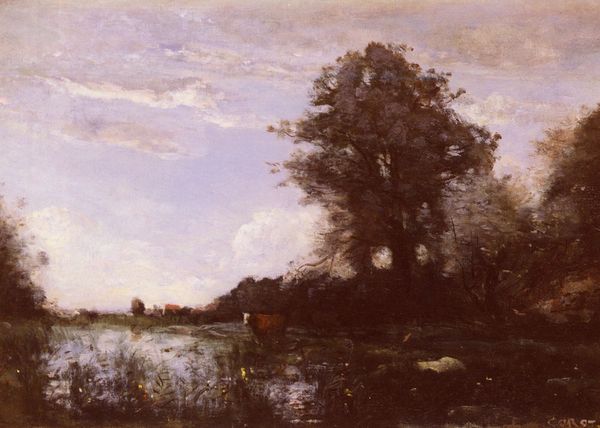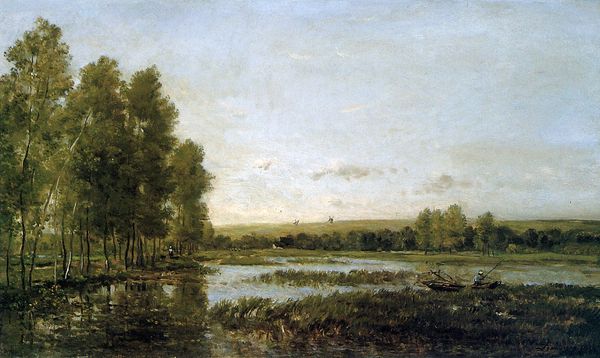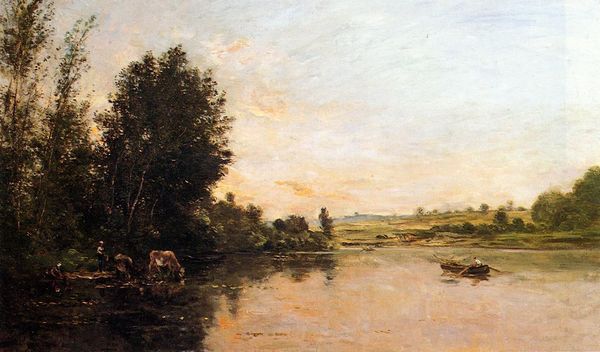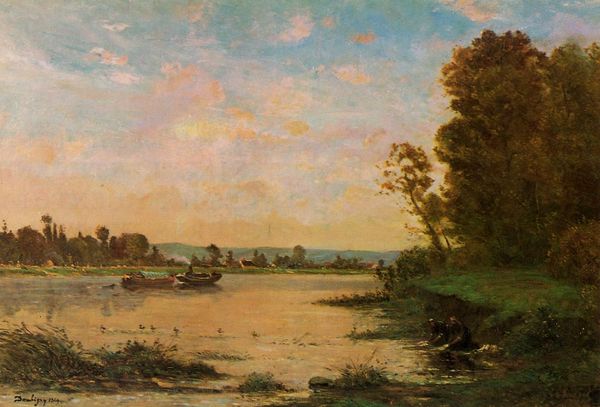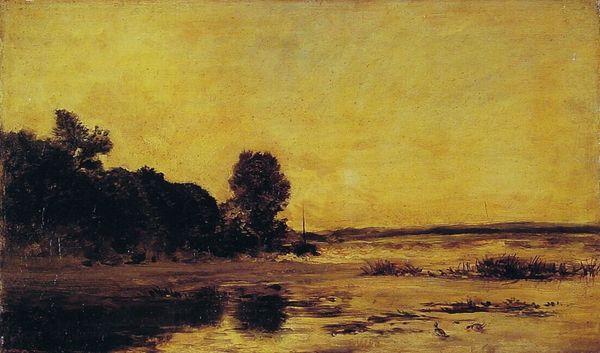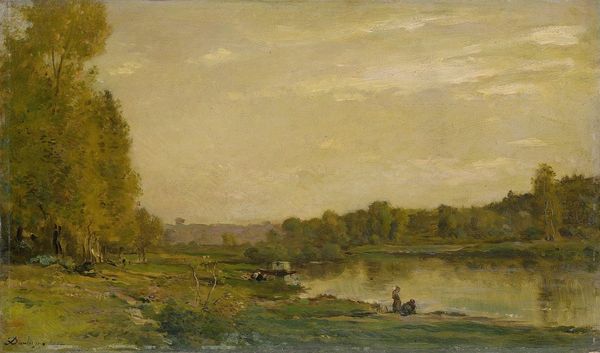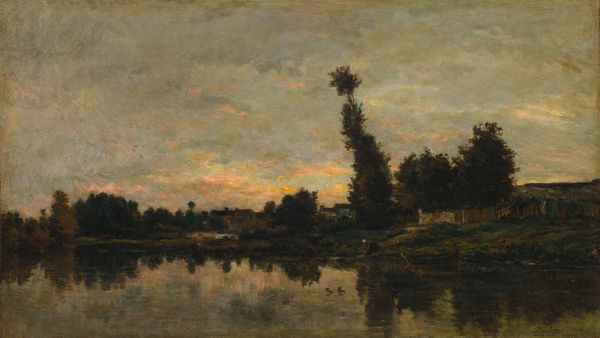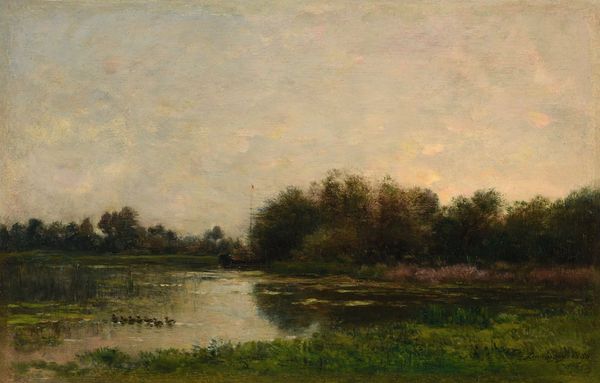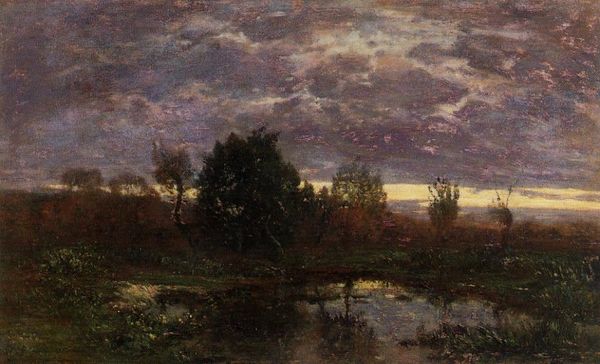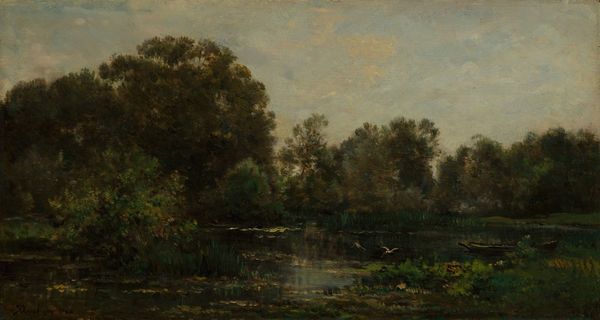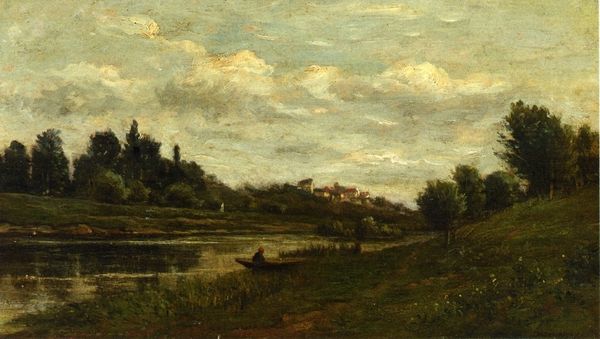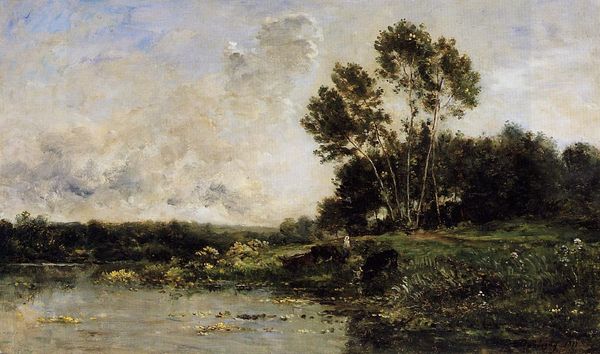
painting, plein-air, oil-paint
#
sky
#
painting
#
impressionism
#
plein-air
#
oil-paint
#
landscape
#
impressionist landscape
#
romanticism
#
water
#
cityscape
Copyright: Public domain
Charles-François Daubigny captured this landscape in "A June Day," using oil paints, likely applied with both brushes and palette knives. The visible texture and layering of paint are essential to understanding the piece. Daubigny was part of a movement called the Barbizon School, known for their direct engagement with nature. Instead of meticulously detailed representation, they were after capturing a feeling, an atmosphere. Look closely, and you'll see how the thickness of the paint mimics the density of the foliage, and the broken brushstrokes suggest the fleeting quality of light on water. The way the paint is applied, almost sketch-like, conveys a sense of immediacy, as if Daubigny painted this scene en plein air, directly in front of the landscape itself. This directness was radical at the time, challenging the more polished, academic style that dominated the art world. Daubigny's approach, prioritizing experience and materiality, helped pave the way for the Impressionists and their radical exploration of light, color, and the very act of painting. It reminds us that art is not just about what is depicted, but also how it is made.
Comments
No comments
Be the first to comment and join the conversation on the ultimate creative platform.
